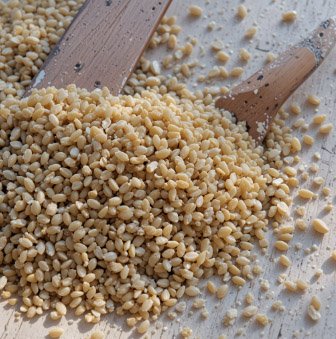Low glycemic index (GI) foods are foods that cause only a slow, gradual rise in blood sugar levels after you eat them.
The glycemic index is a scale from 0 to 100 that ranks carbohydrates based on how quickly they raise blood glucose (sugar) levels. Foods with a low GI (55 or less) are digested and absorbed slowly, providing a steady source of energy and helping to avoid blood sugar spikes. Examples include most non-starchy vegetables, legumes, nuts, and some whole grains.

Choosing low-GI foods can be especially helpful for people with diabetes, those trying to lose weight, or anyone looking to maintain steady energy throughout the day.
When looking for grains with the lowest glycemic index (GI), it’s important to choose options that help keep blood sugar levels stable.
Barley is another excellent choice with a very low glycemic index, typically around 28. It is high in soluble fiber, particularly beta-glucan, which helps slow digestion and improves cholesterol levels.
Bulgur, made from whole wheat that has been parboiled, dried, and cracked, also has a relatively low GI. It is a staple in Middle Eastern cuisine and provides a nutty flavor and chewy texture while supporting steady blood sugar.
Oats, especially steel-cut and rolled oats, are low-GI options (55-56 on GI scale) that make a hearty, satisfying breakfast. They are rich in fiber and promote feelings of fullness, which may help with weight management. Sprouted grains, such as sprouted wheat or sprouted brown rice, are also beneficial because the sprouting process lowers the glycemic index and increases the content of certain nutrients and antioxidants.
Quinoa has a low to medium glycemic index (GI), typically around 53. Interestingly, quinoa is technically not a grain but a seed, often referred to as a “pseudocereal.” Despite this, it is commonly used like a grain in cooking and offers more protein, fiber, and nutrients than most true grains.
Other good options include cooked and cooled rice, whole rye, buckwheat and whole barley flakes. Whole rye, often used in breads, has a lower GI than refined wheat and is linked to better insulin sensitivity. Choosing these grains over refined options not only helps maintain stable energy levels but also supports heart health and digestive health. By focusing on low-GI grains and seeds, you can enjoy satisfying meals that nourish the body and help manage blood sugar more effectively.

